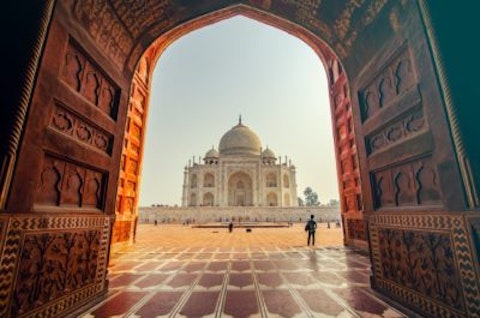In this article, we will take a look at 15 of the biggest Indian companies by market cap. If you want to see more of the biggest Indian companies by market cap, go directly to 5 Biggest Indian Companies By Market Cap.
Like the United States, India has experienced substantial inflation in 2022. Retail inflation was 7.41% in September and a October 13-19 Reuters poll of economists believes inflation could average 6.7% for the year ending March 2023, before falling to 5.2% for the year ending March 2024. The Indian central bank’s target for inflation, meanwhile is 2% to 6%.
India’s economy is also expected to slow at least for next year. According to the Reuters poll of economists, India’s economy is expected to grow 6.9% for the 2022-2023 fiscal year, before slowing to 6.1% for the 2023-2024 fiscal year.
Given the inflation and despite the slowing growth, the Reserve Bank of India has increased the short term lending rate or repo rate four time as of 9/30 to 5.4%.
While India faces headwinds in the near term, India has substantial potential.
With a population that will soon surpass China’s, India has an advantage in that it has one of the youngest populations in the world with an average age of 29.
India’s GDP per capita has substantial potential to increase in the coming decades as well. According to the World Bank, India had a GDP per capita of $2, 277.4 in 2021, up from $443.3 per capita in 2000 but substantially below the GDP per capita of developed nations.
Given its demographics and GDP per capita, India has a lot higher growth potential than developed countries.
Also helping the country’s growth is India’s strong ties with the United States. With the close ties, there’s potential for more trade as well as more foreign direct investment into India. In terms of trade between the United States and India, bilateral U.S. India trade in goods and services rose from $120.6 billion in 2020 to $159.1 billion in 2021. As India’s economy continues to grow, trade could grow too and benefit the citizens of both nations.
In terms of foreign direct investment, the FDIs have increased substantially in the last decade. According to investindia.gov.in,
Total FDI inflows in the country in the last 22 years (April 2000 – March 2022) are $ 847 bn while the total FDI inflows received in the last 8 years (April 2014- March 2022) was $ 523 bn which amounts to nearly 40% of total FDI inflow in last 22 years. In FY 2014-15, FDI inflow in India stood at mere $ 45.15 bn, which increased to $ 60.22 bn in 2016-17 and further to the highest ever annual FDI inflow of $ 83.57 bn reported during the FY 2021-22.
With more foreign direct investment, it’s possible for the Indian economy to grow even faster as foreign companies including American companies often bring in expertise in addition to capital that India may need to realize its full potential.
Leading Indian Companies
In terms of the most valuable Indian companies by market cap, many are financial institutions given how important financial institutions are for an emerging market’s growth. Several others also do business in infrastructure and housing given how important infrastructure is for a growing economy.
Given India’s size, the 15 most valuable Indian companies are all worth $40 billion or more as of 10/27.

Photo by Sylwia Bartyzel on Unsplash
Methodology
For our list of 15 Biggest Indian Companies By Market Cap, we took the top 15 largest companies by market cap from companiesmarketcap.com’s Largest Indian companies by market capitalization list as of 10/27.
15 Biggest Indian Companies By Market Cap
15. Kotak Mahindra Bank
Market Cap as of 10/27: $44.96 billion
Kotak Mahindra Bank is an Indian based bank that provides a range of banking services such as retail banking, treasury, corporate banking, and more.
For the June-September quarter, Kotak Mahindra Bank reported a profit jump of 27% year over year to 25.8 billion India rupees ($313 million) versus analyst estimates of 23.68 billion rupees. One reason for the jump has been the central bank rate hikes which can help net interest income. Another reason is that Kotak Mahindra Bank’s gross bad loans as a percentage of total loans decreased to 2.08% at the end of September from 2.24% at the end of the previous quarter in June. Although too high of interest rates would not be good for Kotak Mahindra Bank’s profits, the bank is doing well given the current economic conditions. As of 10/27, Kotak Mahindra Bank has a market cap of $44.96 billion, ranking it #15 on our list of 15 Biggest Indian Companies By Market Cap.
14. Life Insurance Corporation of India (LIC)
Market Cap as of 10/27: $45.72 billion
Life Insurance Corporation of India (LIC) is India’s largest insurer that has benefited from India’s economic rebound since the pandemic. In August, Life Insurance Corporation of India (LIC) reported a 20.4% increase in its premium income for the June quarter as the company’s 1.3 million sales agents benefited from the easing of COVID-19 restrictions. For the three months ended June 30, the company’s profit was 6.83 billion rupees, versus 29.4 million rupees in the previous year’s quarter, which was affected by the COVID-19 lockdowns. If it keeps its leading market share, Life Insurance Corporation of India (LIC)’s financial results will likely be substantially higher in the next few decades.
13. Adani Enterprises
Market Cap as of 10/27: $46.02 billion
Adani Enterprises is a holding company that owns businesses spanning from coal mining, oil and gas exploration to ports, power generation and solar manufacturing. Although the markets in the U.S. have declined substantially in 2022, shares of Adani Enterprises have almost doubled from the beginning of the year. As a result, Adani Enterprises has a market cap of slightly over $46 billion, ranking it #13 on our list of 15 Biggest Indian Companies By Market Cap.
12. Adani Total Gas
Market Cap as of 10/27: $46.90 billion
Adani Total Gas produces and distributes natural gas in India. The company also sells industrial and compressed natural gas to the commercial, residential and transport sectors of the country. Although India has a goal of net zero carbon emissions by 2070, natural gas is cleaner than coal and India has a goal of increasing natural gas’ contribution to country’s energy mix to 15% by the 2030 from 6.2% now. If that occurs, Adani Total Gas could benefit from more demand in the medium term if it maintains its existing market share. As of 10/27, Adani Total Gas has a market cap of $46.9 billion.
11. Bajaj Finance
Market Cap as of 10/27: $51.25 billion
Bajaj Finance is an India based non-banking financial company that does consumer lending as well as small and medium enterprises lending. In terms of its strategy for the future, Bajaj Finance managing director Rajeev Jain commented on an earnings call,
Whatever I understand from shareholders, our view is we are focused on building financial services business to payments and finance business, and will continue to remain a non-bank and meet all bank like regulations over the next 2-3 years. We would like to reach 100 million customer franchise in next five years.
With its market cap according to companiesmarketcap.com, Bajaj Finance is also one of the most valuable Indian companies in the world.
10. ITC
Market Cap as of 10/27: $52.07 billion
ITC is an Indian based holding company with businesses that operate in the FMCG, Hotels, Paperboards, Paper and Packaging, as well as the Agri sectors. Although the U.S. stock market and many other stock markets around the world have declined in 2022, shares of ITC have increased over 50% year to date. As a result of the increase, ITC has a market cap of over $52 billion as of 10/27, ranking it #10 on our list of 15 Biggest Indian Companies By Market Cap.
9. Housing Development Finance Corporation
Market Cap as of 10/27: $52.58 billion
Housing Development Finance Corporation is an Indian based holdings company that provides finance to individuals, corporations, and developers for the purchase, development, and repair of houses, apartments and commercial properties. Housing Development Finance Corporation also provides loans, insurance, and asset management services. As of 10/27, Housing Development Finance Corporation had a market cap of $52.58 billion.
8. Bharti Airtel
Market Cap as of 10/27: $58.79 billion
Bharti Airtel is a global telecommunications company headquartered in India but with operations in 18 countries across Asia and Africa. Bharti Airtel offers mobile services as well as digital TV. According to the company, Bharti Airtel ranks among the top 3 mobile service providers in the world in terms of the number of subscribers given its 490 million customers across its operations. Given its market cap of almost $59 billion, Bharti Airtel also ranks #8 on our list of 15 Biggest Indian Companies By Market Cap.
7. State Bank of India
Market Cap as of 10/27: $62.80 billion
State Bank of India is an Indian based banking and financial services company that provides treasury, corporate and wholesale banking as well as retail banking and insurance services. State Bank of India is one of India’s largest banks and the company’s retail business is expected to grow. As of 10/27, State Bank of India has a market cap of almost $63 billion.
6. Hindustan Unilever
Market Cap as of 10/27: $71.85 billion
Hindustan Unilever is an Indian based consumer goods company that sells Home Care, Beauty & Personal Care, as well as Foods & Refreshment products. Hindustan Unilever is also a subsidiary of Unilever and accounts for around 10.7% of the company’s group sales. With India’s growing population and economy, Hindustan Unilever has substantial growth potential if it manages to maintain its market share.
Click to continue reading and see 5 Biggest Indian Companies By Market Cap.
Suggested articles:
- 20 Biggest Companies in the World by Employees
- 15 Largest ETFs in the World
- 10 Biggest ETF Companies in USA
Disclosure: None. 15 Biggest Indian Companies By Market Cap is originally published on Insider Monkey.





